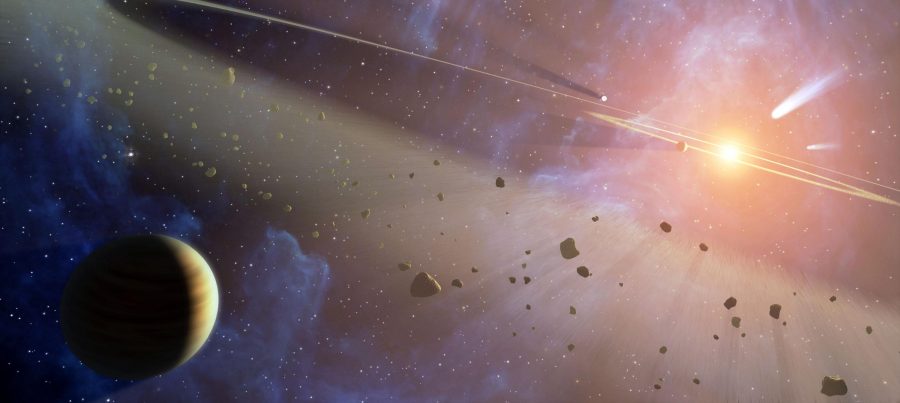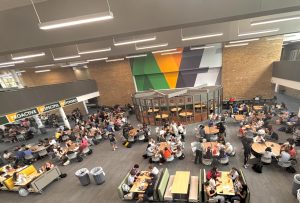Astronauts discover ‘nursery’ for planets
This artist’s conception of the closest known planetary system to Earth shows two asteroid belts around the young star Epsilon Eridani (in the background) and their accompanying planets. The comets in the upper right corner are coming from a third planet too far away to be shown. (NASA/MCT)
December 17, 2015
Recently, a group of astronauts have seen definitely one, but possibly two, Jupiter-like planets that are in the process of being born about 335 light years away.
The developing planets are kept in the “nursery” which is surrounded by natal clouds and dust. This helps the astronauts understand what other exoplanet systems looked like in their adolescence.
As this is the second actively forming planet, the first (known as HD 100546 b) was researched by a research team. This evidence included a disk of material around the planet that was still in the process of forming.
Investigator Thayne Currie said, “Now, seven years later, we can for the first time see what this planetary system may have looked like while the planets were just coming into existence.”
This nursery was seen with the Gemini South telescope in Chile; they continue to do research and believe they may find additional stars at the young stage.
Co-author of the research Ryan Cloutier said, “In fact, one of the observed protoplanets might instead be a hotspot within the disk or a signpost of an unseen protoplanet.”
As astronomers have a difficult time predicting what a system of infant planets will look like, it is important to study these different nurseries.
Cloutier said, “For HD 100546, its spiral arms may suggest the presence of additional planets.”
The planets near HD 100546 are not the only planets being studied; international astronomers are studying another planet process of LkCa 15 b, located approximately 450 light-years from Earth.
–



![Mock Trial members from Gold and Green team last year pose for a picture in front of the OCLRE building in Columbus. "We all put in so much work [last] year. I know [this] year we’ll come back improved and ready to win!” said Ogunbodede.](https://shsleaf.org/wp-content/uploads/2025/10/IMG_4121-300x205.jpg)



